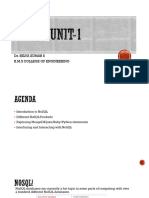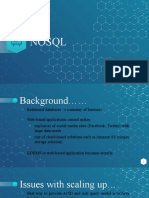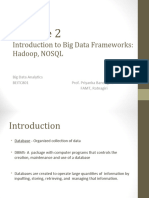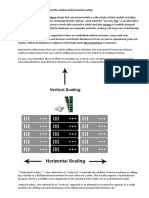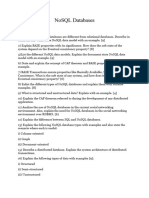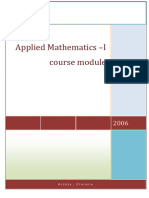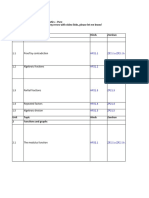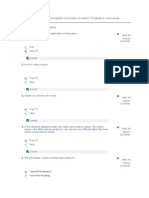0% found this document useful (0 votes)
26 views64 pagesNoSQL Database
The document discusses the benefits and limitations of relational databases compared to NoSQL databases, highlighting that while relational databases are designed for structured data and provide ACID properties, they struggle with scalability and distributed applications. NoSQL databases offer flexibility, horizontal scaling, and schema-less design, making them suitable for handling large volumes of diverse data. The CAP theorem is introduced, emphasizing the trade-offs between consistency, availability, and partition tolerance in distributed systems.
Uploaded by
Md HamidCopyright
© © All Rights Reserved
We take content rights seriously. If you suspect this is your content, claim it here.
Available Formats
Download as PDF, TXT or read online on Scribd
0% found this document useful (0 votes)
26 views64 pagesNoSQL Database
The document discusses the benefits and limitations of relational databases compared to NoSQL databases, highlighting that while relational databases are designed for structured data and provide ACID properties, they struggle with scalability and distributed applications. NoSQL databases offer flexibility, horizontal scaling, and schema-less design, making them suitable for handling large volumes of diverse data. The CAP theorem is introduced, emphasizing the trade-offs between consistency, availability, and partition tolerance in distributed systems.
Uploaded by
Md HamidCopyright
© © All Rights Reserved
We take content rights seriously. If you suspect this is your content, claim it here.
Available Formats
Download as PDF, TXT or read online on Scribd
/ 64


















